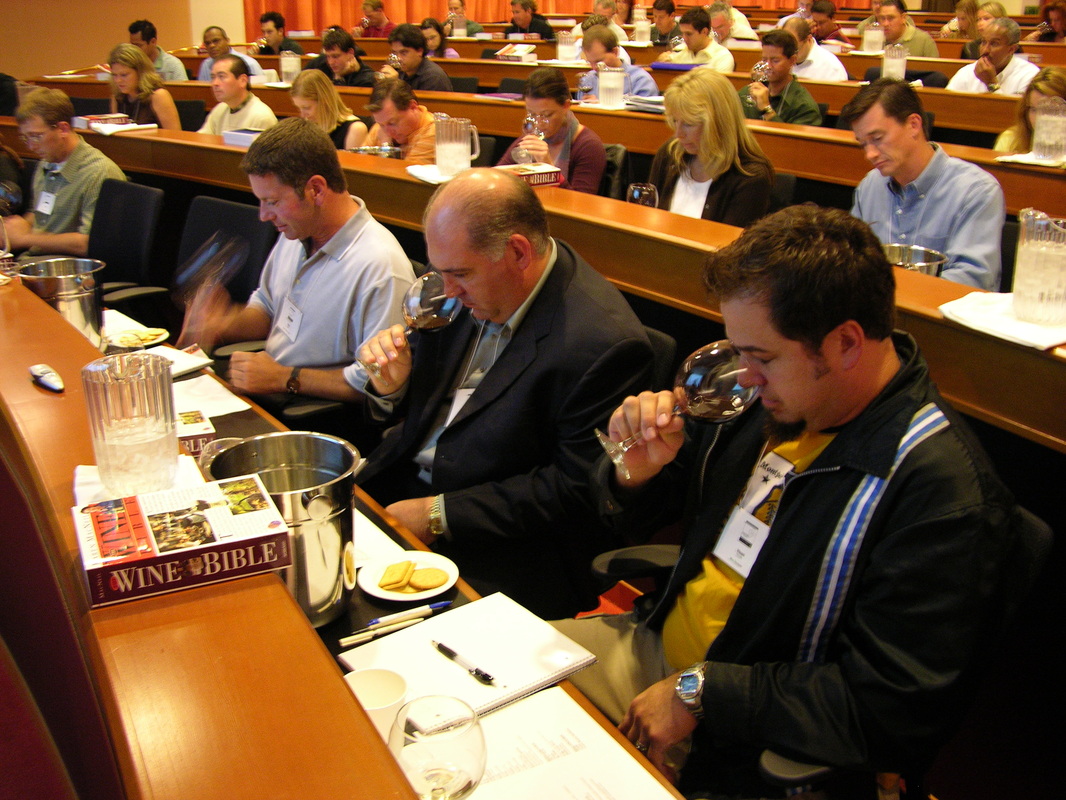n
Palate
Overall: tasting involves two goals: confirming what you’ve already smelled in the glass and calibrating the structure as in the acid, alcohol, and tannin as well as the finish.
Sweetness/dryness: for me the true measure of a wine’s sweetness or dryness is the finish. Taste the wine, wait a few seconds, and then see what you have on the finish. It should be obvious.
Confirmation of the nose: go through the fruit, non-fruit, earth, and oak components of the palate of the wine methodically. Quickly reassess and note the things you’ve smelled previously. If something is new, by all means mention it. This is also the time to be aware if the qualities of the fruit, non-fruit, or earth/mineral have changed from the nose to the palate.
Structure: while some individuals have no problem calibrating the structure of a wine quickly, many others (including me) find that the structural elements including the acid, alcohol, and tannin, are a delayed physical response. As mentioned above, I strongly advise retasting the wine and waiting for at least 3-5 seconds before trying to describe it. Be as precise as you can as you can only provide one specific answer.
As a side note, most experienced tasters have an internal visual scale they use to confirm the precise level of acidity, alcohol, tannin, and the finish; literally a visual device to help confirm what they’re tasting and sensing.
Conclusion
First impression: this is the time to go back to that first impression if one popped up and see if it still makes sense. If not, chuck the idea or use it to compare or contrast possible grape varieties or appellations. However, if it still makes sense in the context of the wine, be sure to at least mention it in your initial conclusion.
In terms of deducing a specific grape variety, I find that more often than not it’s useful to go through a mental quick check list of what the wine is NOT, eliminating grapes and narrowing the possibilities of what it can be.
Avoid at all costs basing your conclusion on a single element that you’ve seen, smelled, or tasted in the wine. One thing is rarely, if EVER, enough on which to base a conclusion. Use the entire grid to make your conclusion. Evan Goldstein MS calls it “CSI”-like work where you’re building a case throughout the tasting process as to what the wine could be. I couldn’t agree more.
Match non-fruit qualities to structural elements: most semi-aromatic white grapes and thin skinned red grapes have very similar fruit profiles but very different non-fruit qualities. Combine the non-fruit and the structure of the wine and you have a lot of information on which to base a conclusion.
Reset! Once you’ve finished a wine in a tasting or exam reset to the beginning of the process and start completely anew each time. If you have trouble with one of the wines in the flight, get through it as completely and thoroughly as you can, make the best conclusion you can in the moment, and then move on. Whatever happens, don’t allow one challenging wine to throw you off your game for the rest of the flight. Be disciplined, be focused, and be confident that you have done it many times before and can do it again now in the moment.
Tasting Practice: Associated Rehearsal
It goes without saying, that any student must practice individually and also be part of a tasting group to be successful in the tasting exams. Both are invaluable and irreplaceable. However, after many years of coaching a lot of students I’ve come to believe that associative rehearsal, especially for those experienced students taking the Master’s Exam, can be just as useful as physically tasting wine. That’s simply because once a student gets beyond the Advanced Exam odds are they’ve tasted a great deal of wine and have a considerable, sometimes remarkable, database of memories from previous wines.
For these students—and all students for that matter—the exam is all about memory, specifically olfactory and palate memory. Improving memory does not require having a glass of wine in hand. I strongly believe that someone at the Master’s Exam level needs to be able to mentally call up the complete experience of a classic wine—as in how it looks, smells, tastes, and feels on the palate—on command.
With that, I recommend students preparing for an exam regularly make time to mentally mock up a flight of six classic wines in an exam-type setting (again, all of this in terms of visualization) and then talk through the wines out loud using the MS grid just like they would during an actual examination. During this rehearsal the student needs to remember and experience each wine as completely and intensely as possible; seeing the wine clearly in their mind’s eye, smelling it completely and accurately, tasting it fully, and noting the flavors and structural elements accurately–and then concluding the wine perfectly while feeling really confident.
Practicing tasting using associative rehearsal accomplishes several things: it connects one to their memories of various specific components found in wine; it also reminds one of overall impressions and memories of classic wines in a package of sight, smell and taste; it further builds recognition in terms of describing a wine perfectly through auditory cognition and recognition. Finally, practicing talking through wines out loud helps to build an inner comfort zone for the as far as having confidence using the language of the grid and speaking aloud in front of examines.
I can’t recommend practicing with associative rehearsal strongly enough. So much of the tasting exam is about having confidence with one’s own internal experience, sensitivity, calibration, and memory. This is a great way to improve them all–and easily.
Cheers!
nn
